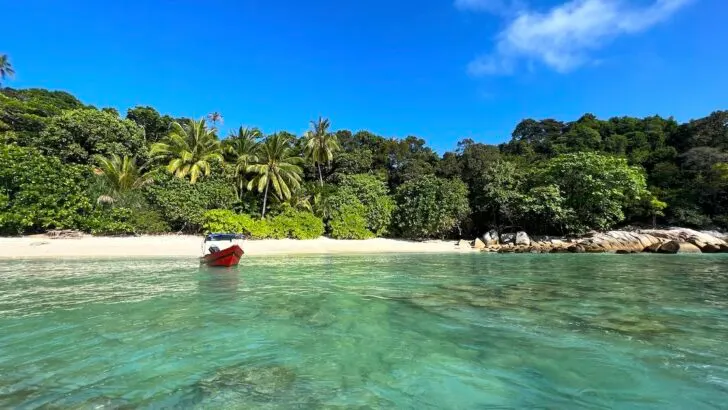I regularly think about my time in the Perhentian Islands in Malaysia. Ever since my impromptu trip, I haven’t been able to find anywhere quite like it.
Remote, tropical and uncrowded, the Perhentian archipelago has calm turquoise waters, uncrowded white-sand beaches and incredible snorkelling and diving sites.
It’s tucked just off the northeast coast of Peninsular Malaysia and is mostly only well-known among Malaysian tourists.
I spent five days exploring the Perhentian Islands in Malaysia from a rustic beachfront guesthouse.
I swam with reef sharks, ate Malay cuisine at a traditional fishing village, and hiked (or boated) to some of the most beautiful beaches I’ve visited in my life.
In the following guide, I’ll talk you through what you can expect when visiting, including stories from my trip and my opinions on the best things to do in the Perhentian Islands.
Yet to work out how to get there? Visit my detailed guide on how to get to the Perhentian Islands.
Disclosure: This post includes affiliate links. If you decide to click through and make a qualifying purchase, I will receive a small commission at no extra cost to you – thanks for your support.
QUICK INFORMATION
Best time to visit: March to September
How to get there: Ferry from Kuala Besut to Perhentian
Don’t miss these experiences…
1. Hiking to Adam & Eve Beach 🌴
2. Perhentian diving course – with the Quiver Dive Team (PADI)
3. Snorkelling at Shark Point 🦈
Where Are the Perhentian Islands?
The Perhentian Islands are located 12.4 miles (20 kilometres) from the northeast coast of Peninsular Malaysia.
The nearest mainland town is Kuala Besut, which is a six-hour drive from George Town and an eight-hour drive from Kuala Lumpur.
Are the Perhentian Islands Worth Visiting?
Out of everywhere I visited in Peninsular Malaysia, the Perhentian Islands were my favourite. Honestly, I felt like I was swept up in a whirlwind romance.
Palm trees blending into white sand and calm turquoise water? Hardly any other tourists? Consider me persuaded.
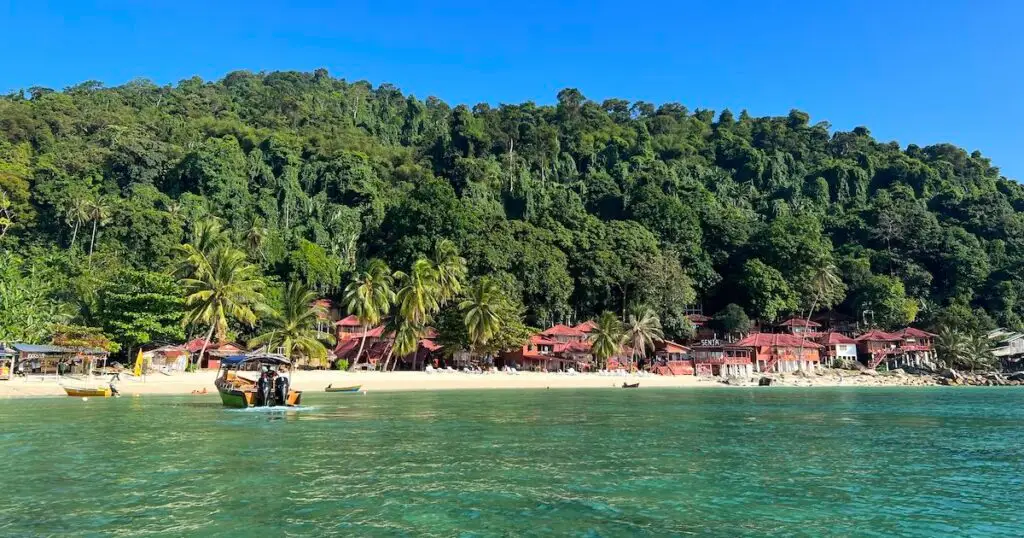
I took the budget route – staying in a basic hostel with no hot water – which was a bit of a gamble.
However, I found that I didn’t need anything else. Staying right next to the beach and spending my days in and out of the ocean around the islands, I walked away feeling more content and relaxed than I had been in a long time.
The laidback islands had everything I could want and more – beaches, good snorkelling, plenty of food, beachfront accommodation and palm trees in every direction.

So, are the Perhentian Islands worth visiting?
If you’re interested in any of the following, they should be…
- Uncrowded beaches
- Excellent snorkelling and diving
- Boat trips
- Beachfront accommodation
- Beach bars and restaurants
- Hiking
My Experience on the Perhentian Islands
I visited the Perhentian Islands on a whim. A friend of mine, who had been backpacking for over six months, casually mentioned that they were one of the best places he’d visited on his trip.
He especially raved about Adam & Eve Beach, which he recalled having completely to himself.
This conversation came back to me when I was exploring Taman Negara, Malaysia’s oldest rainforest, with two other backpackers.
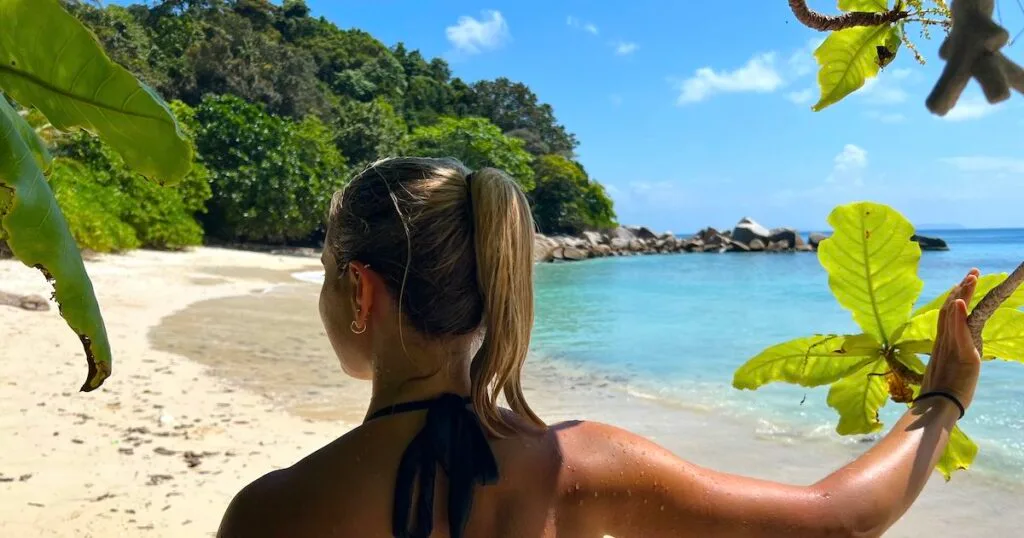
Adam & Eve Beach
We had been planning to visit the Cameron Highlands next, but instead I said, “Why don’t we go to the Perhentian Islands?”
They were easily swayed, being two keen divers, and one quick Google search revealed that the island has a handful of PADI dive schools and a reputation for having some of the best corals in Peninsular Malaysia.
We booked into Seahorse Diver Guesthouse, a hostel/guesthouse on Long Beach on the Small Island (Perhentian Kecil).
It looked basic, with cold showers and no air-conditioning, but reviews raved about the views and friendly hosts.
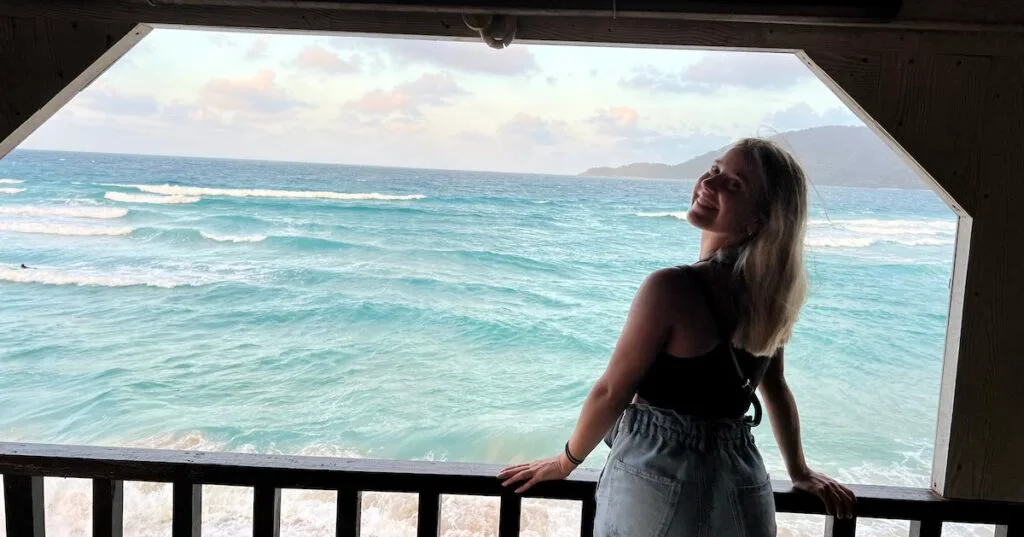
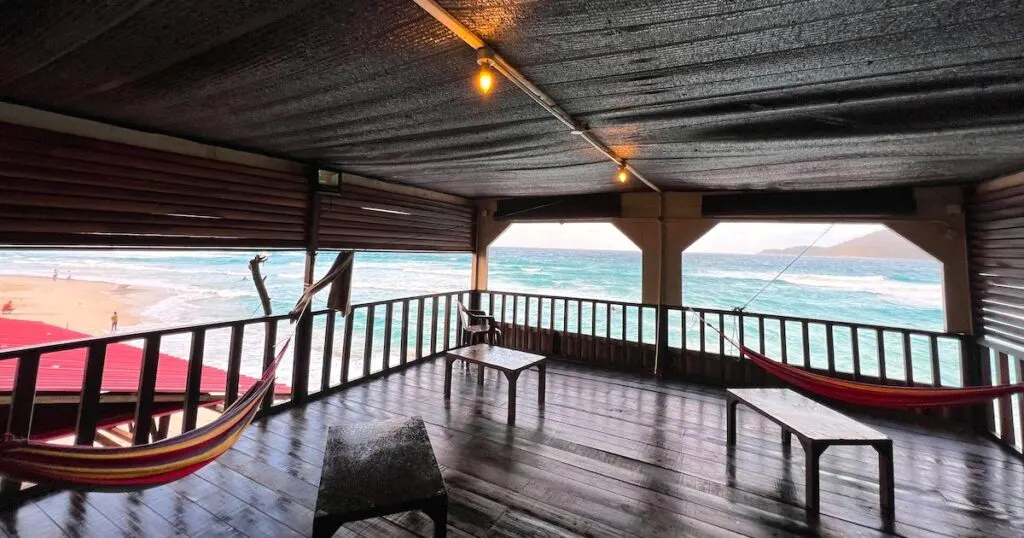
Seahorse Divers, Long Beach
I had the most incredible, relaxing few days there, spending my downtime in the hammocks on the balcony.
How to Get There
The only way to reach the islands is to take the ferry from Kuala Besut, as I explain in my guide to how to get to the Perhentian Islands.
The Kuala Besut to Perhentian ferry costs MYR 35 (£6) each way and takes 30 – 40 minutes.
It stops at both Perhentian Kecil (Small Island) and Perhentian Besar (Big Island), so make sure to get off at the correct island for your hotel.
When I visited, we were dropped off at the Coral Beach boat jetty on Perhentian Kecil. My guesthouse told me that at some other times of the year, they stop at Long Beach too.
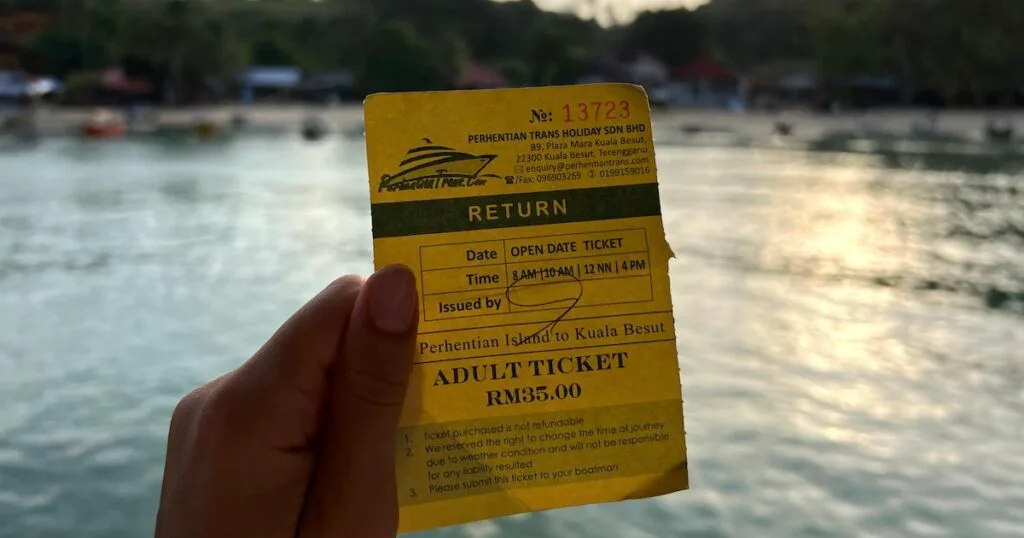
You can book the ferry at the terminal in Kuala Besut. However, I recommend reserving your ticket online because my ferry (the last one of the day) was full.
To reach Kuala Besut, you usually need to fly to Kota Bharu and then take a taxi to Kuala Besut.
However, you can also take a bus from Taman Negara, the Cameron Highlands, Penang or Kuala Lumpur.
Where to Stay in the Perhentian Islands in Malaysia
There are two main islands in Perhentian:
To the west is Perhentian Kecil (Small Island), where I stayed. This smaller island is suited to adventure travel and backpackers. It has hiking trails, restaurants, bars and many diving and snorkelling providers.
To the east is Perhentian Besar (Big Island), which is suited to families and older couples. It has more of a laidback resort vibe, but also plenty of restaurants, bars, and diving/snorkelling providers.
I stayed at Seahorse Diver Guesthouse on Long Beach, which I think is more scenic than Coral Beach
To get there from the Coral Beach port, I had to walk (with my bags) for 15 – 20 minutes. The path is mostly flat, but has around five minutes of incline in the middle.
If you don’t want to walk, I recommend that you stay on Coral Beach. Ombak Dive Resort is right next to the marina.
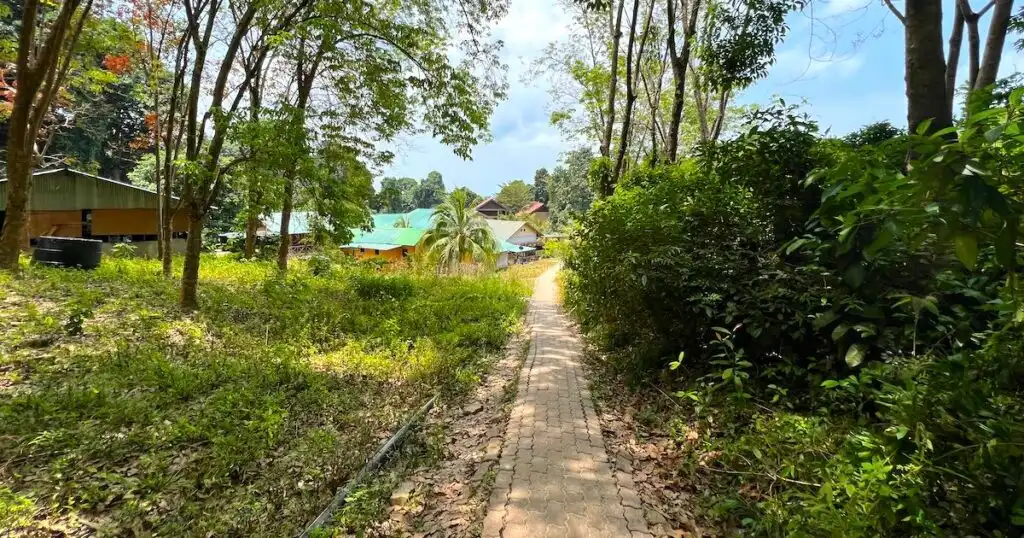
The path from Coral Beach to Long Beach
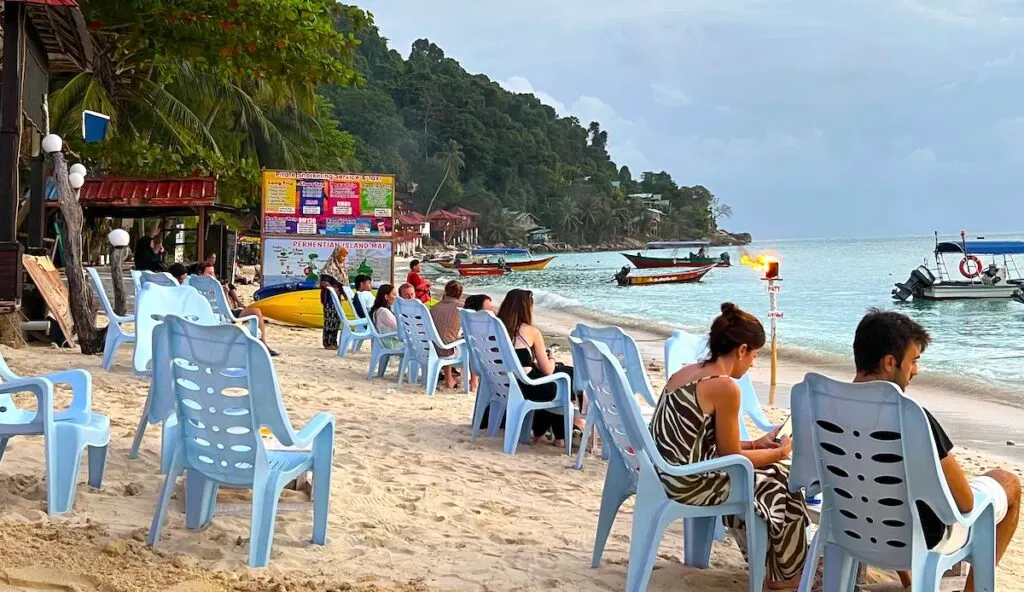
Coral Beach
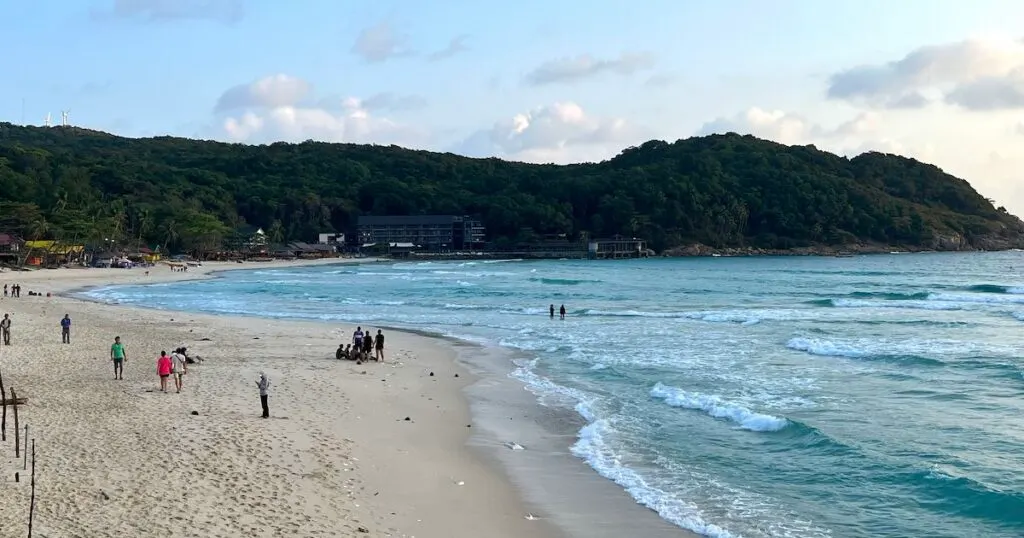
Long Beach
These are some of the best picks on Small Island…
Things to Do in the Perhentian Islands in Malaysia
Let’s get stuck into some of the best things to do and places to visit in the Perhentian Islands in Malaysia…
1. Hike to Landing Beach
On my first day in Perhentian, I set out to hike to two of the best beaches on Perhentian Kecil (Small Island): Landing Beach and Adam & Eve Beach.
I started the hike directly from Long Beach, using the Turtle Beach, D’Lagoon and Long Beach Loop route on AllTrails as a rough guide.
The hike begins with an uphill forest climb for around three-quarters of a mile (with around 400 feet in elevation gain), before emerging at the Perhentian Windmill.
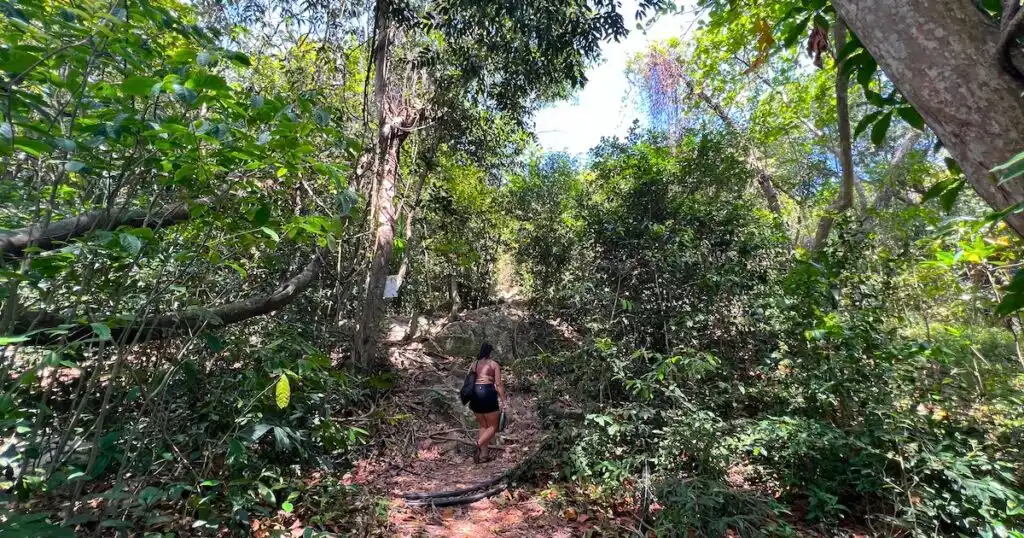

Views from Perhentian Windmill
At the windmill, there is a wooden boardwalk along the coast where you can stop to take some pictures.
From there, it’s only around 20 – 30 minutes (mostly downhill) to Landing Beach, which is marked Cenderawasih Beach on the AllTrails Map.
When we arrived at the sandy beach in the late morning, there were only a handful of people there.
Several islands sit on the horizon behind the shallow crescent-shaped bay.
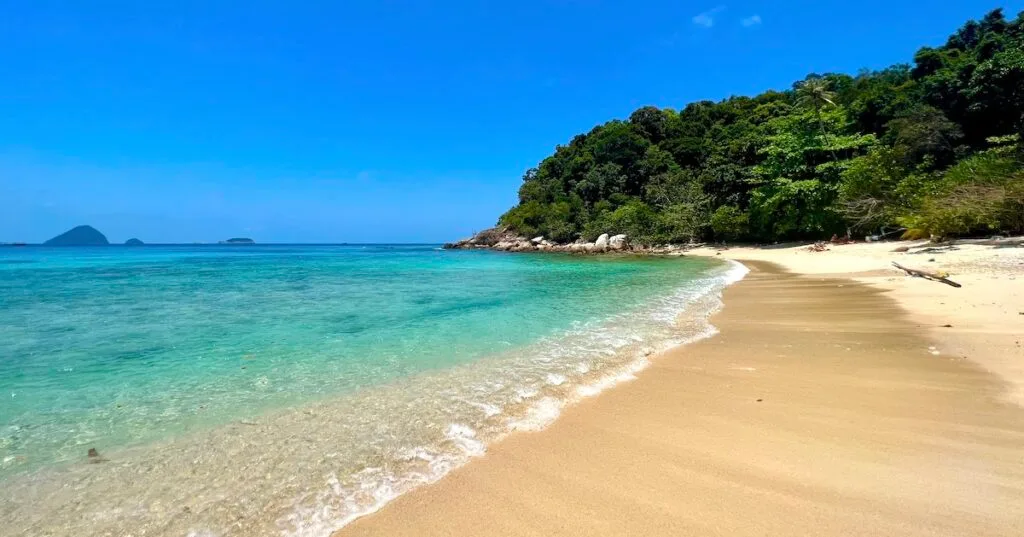
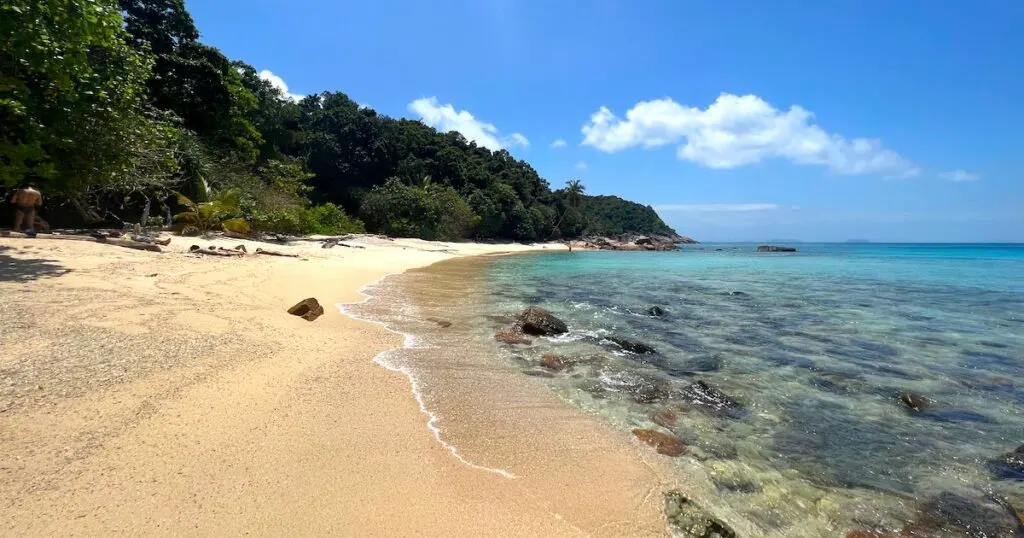
At the south end of the beach, there is a collection of smooth granite boulders.
A short clamber over the boulders and you’ll find another, smaller beach with shallow turquoise water and screw pine trees.
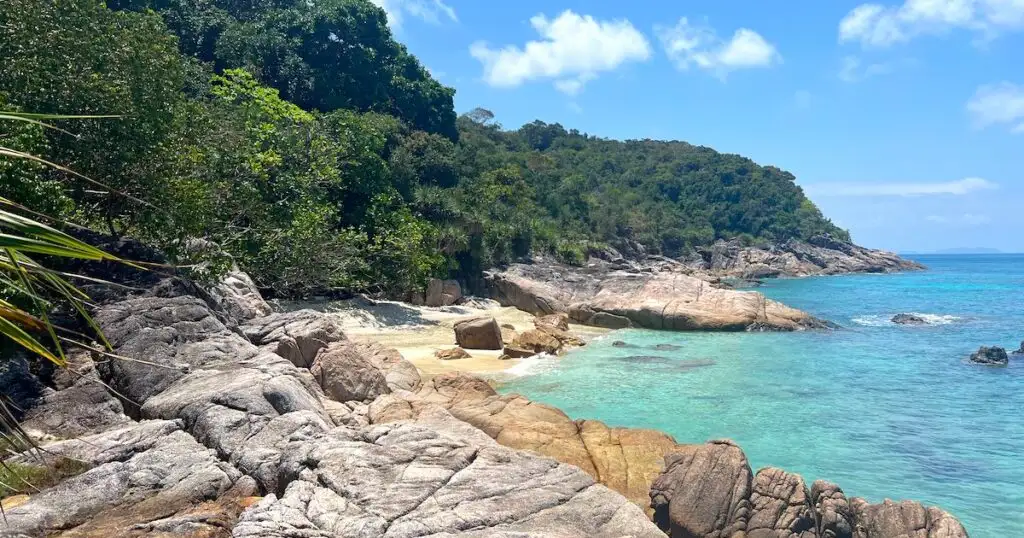
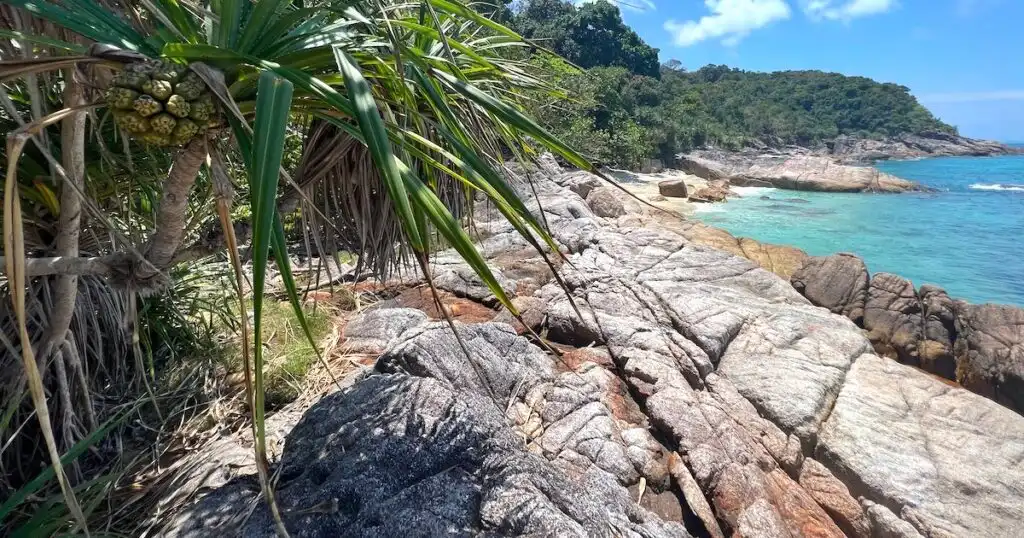
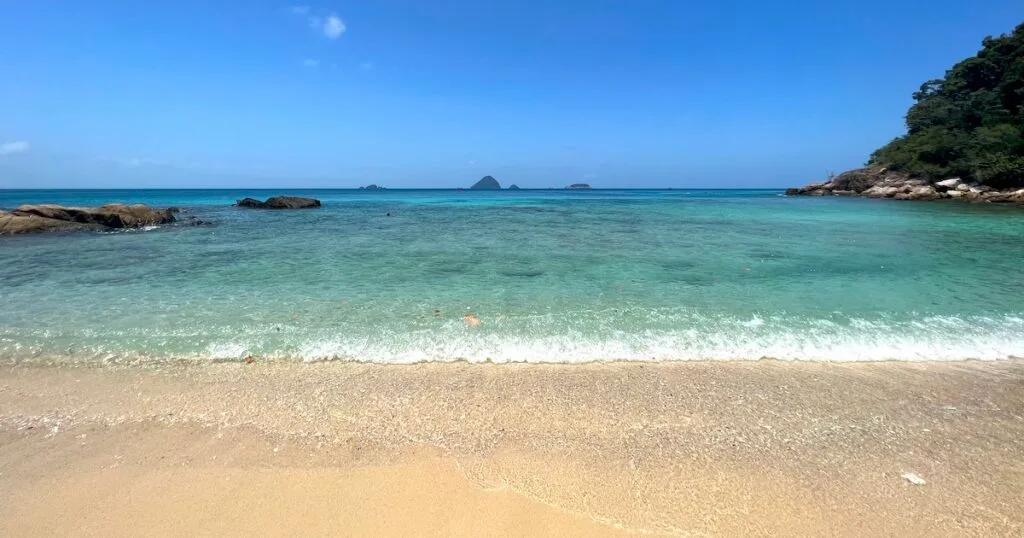
We spent a couple of hours on the beach snorkelling and sunbathing. The seafloor is quite rocky, so I recommend that you wear reef shoes when wading or watch where you step.
2. Hike to Adam & Eve Beach
After visiting Landing Beach, we continued our hike to Adam & Eve Beach – my favourite place in the Perhentian Islands, and the beach that my friend had talked so fondly of.
Adam & Eve exceeded my expectations. We emerged through the waxy beach naupaka leaves onto a swathe of golden sand with no living person in sight.


Adam & Eve Beach is smaller and more pristine than Landing Beach – probably because you need to hike a bit further to reach it.
There are also fewer rocks in the water, which makes it more enjoyable for swimming. It looks out over the same islands as Long Beach, so the view is exceptional.
We spent around two or three hours on the beach in total, sunbathing, swimming and sharing snacks and water.
It goes without saying that if you do these hikes, you need to pack plenty of water for each person (at least two to three litres) because there are no facilities on the beaches.
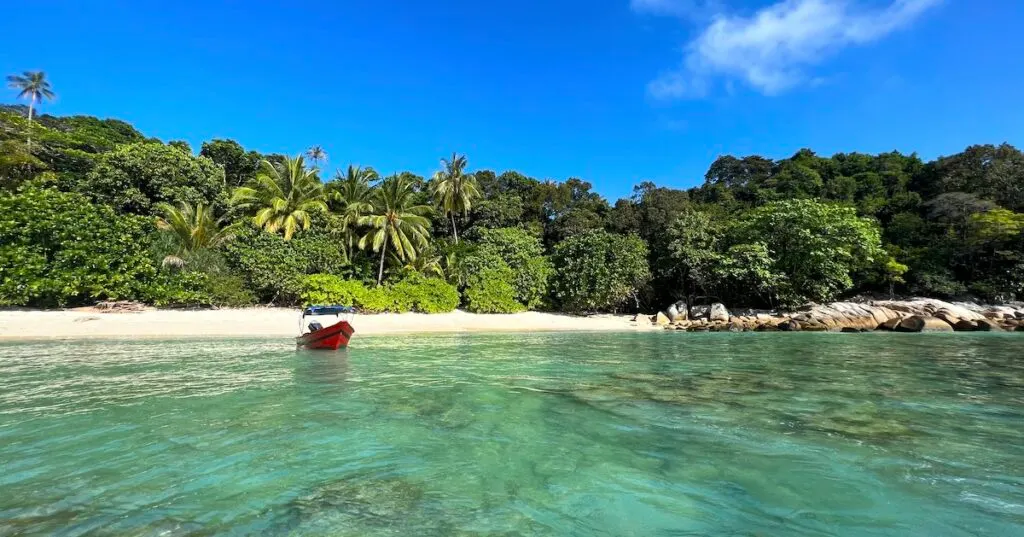
Just as we were preparing to hike back to Long Beach, a small boat pulled up to the beach carrying three tourists.
They had paid for a driver to take them directly from Coral Beach to Adam & Eve, skipping the hike there entirely.
We flagged him down before he could speed away and paid the same price (only 30 MYR) for the 10-minute trip back to Coral Beach, which saved us around an hour of hiking.

Of course, you can’t rely on a boat appearing out of thin air, as it did for us.
However, what you can do is arrange for a boat to pick you up at a pre-arranged time.
3. Go diving
The Perhentian Islands have 10+ dive sites, including two wreck sites.
The area is known for its calm waters and sea life, including reef sharks, turtles, blue-spotted stingrays and barracudas (at deep dive sites).
My friends completed several dives with the Quiver Dive Team, a popular PADI centre on Coral Beach.
They run a Perhentian diving course for people who are looking to get their PADI Open Water Diver certification, as well as more advanced courses.
4. Go on a snorkelling trip
If you’re not a diver, you don’t need to miss out on seeing the islands’ marine life. There are plenty of snorkelling tours to choose from.
We booked our tour at one of the restaurants on Long Beach after comparing the different prices and destinations that different operators offered.

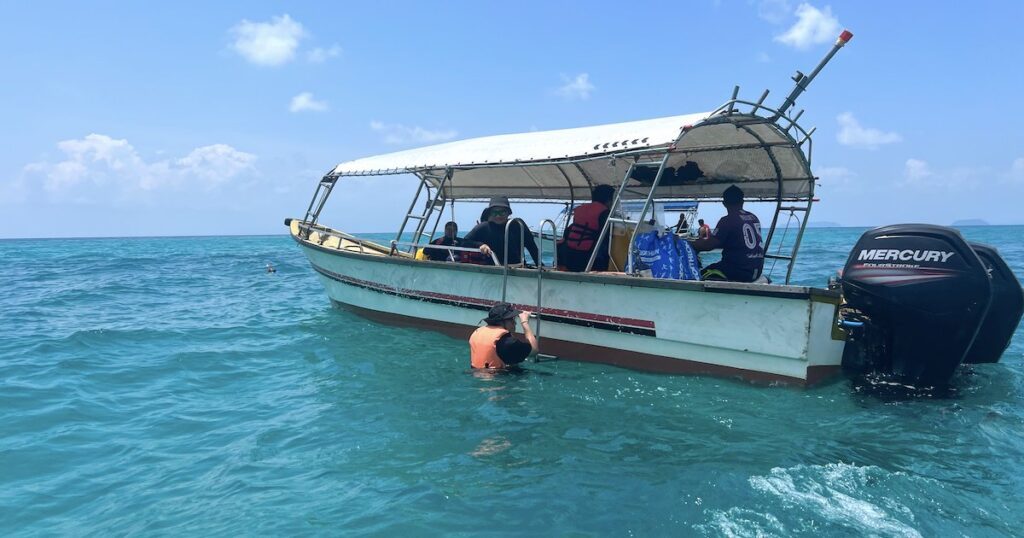
There are many snorkelling sites in Perhentian but in these next few sections, I’ll explain which ones I visited and what I did and didn’t like about them…
5. Snorkel with sharks at Shark Point
Shark Point was my favourite snorkelling site in the Perhentian Islands in Malaysia, because it gave me my first experience of snorkelling with sharks.
Located on the south side of Perhentian Besar (Big Island), Shark Point is a shallow area of water next to the granite coastline.
There isn’t any coral there, but the area is frequented by black-tip reef sharks. I saw around five sharks in total, measuring up to two metres.
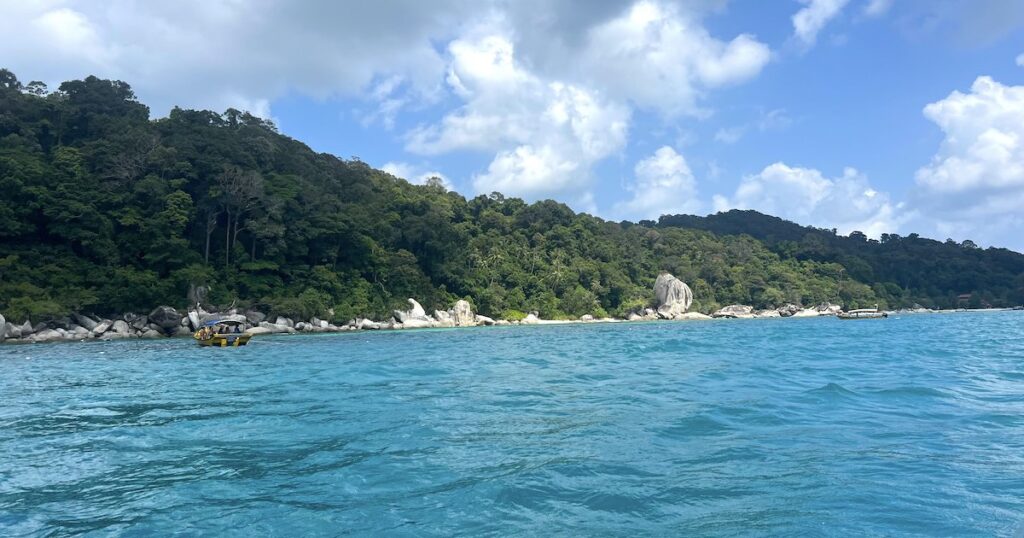
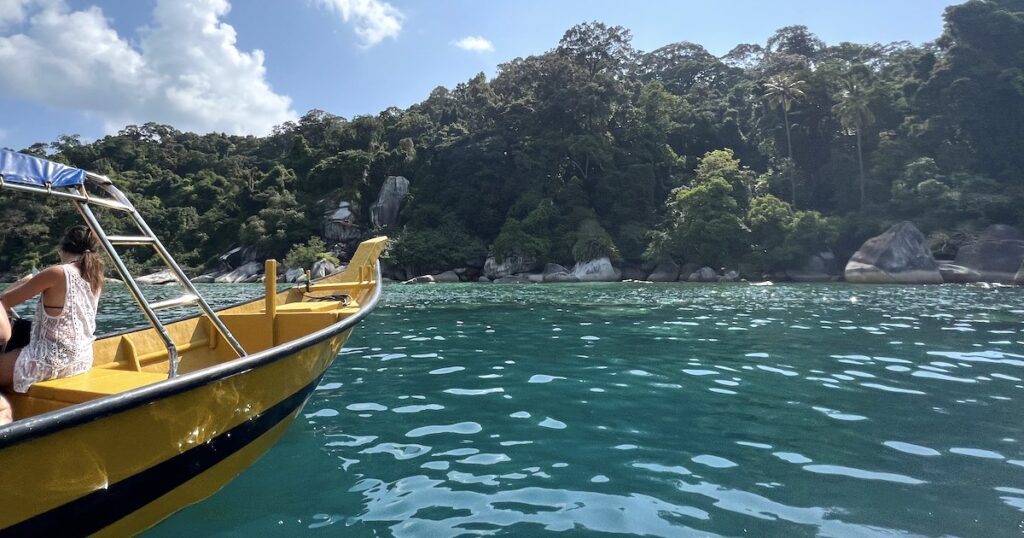
Black-tip reef sharks don’t prey upon humans, so it should be safe to swim with them as long as you don’t provoke them and are respectful of their space.
For me, it was a very peaceful, enlightening experience.
The only thing I will say is that many of the snorkelling tour guides attempted to lure the sharks by throwing out dead fish.
This type of shark baiting can encourage sharks to associate humans with food, so I’d avoid getting too close to the bait and encourage your guides not to use bait.
6. Snorkel at Seabelle Rock Lighthouse
The Seabelle Rock Lighthouse is an unusual snorkelling site, being that you get dropped off at a small, white lighthouse standing on a submerged rock platform.
As it’s surrounded by open ocean, the currents are stronger at this snorkelling site. You need to be careful not to get too close to the lighthouse because you can easily hurt yourself on the rocks and shells.
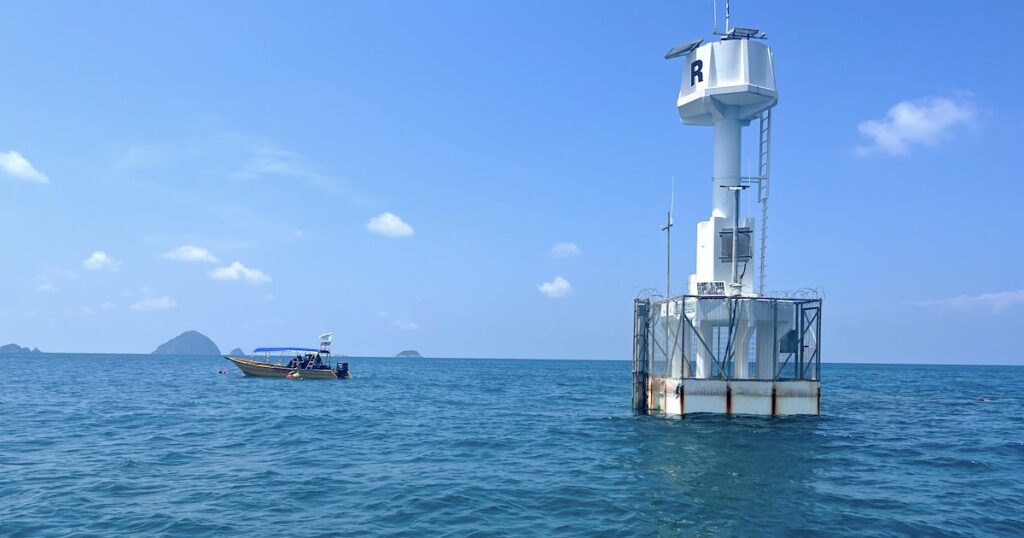
I saw plenty of colourful fish around the coral, though, including lots of rainbow fish and clown fish.
Overall, it wasn’t the most interesting spot, but it’s worth a quick lap in case you spot something new.
7. Go snorkelling at Romantic Beach
Romantic Beach was the final stop on my snorkelling tour. However, you can also hire a boat to take you there independently, as it’s on the northeast side of Perhentian Kecil (Small Island) and only around 10 minutes from Coral Beach.
It’s a really beautiful beach with white sand, gentle shallow waters and granite boulders.
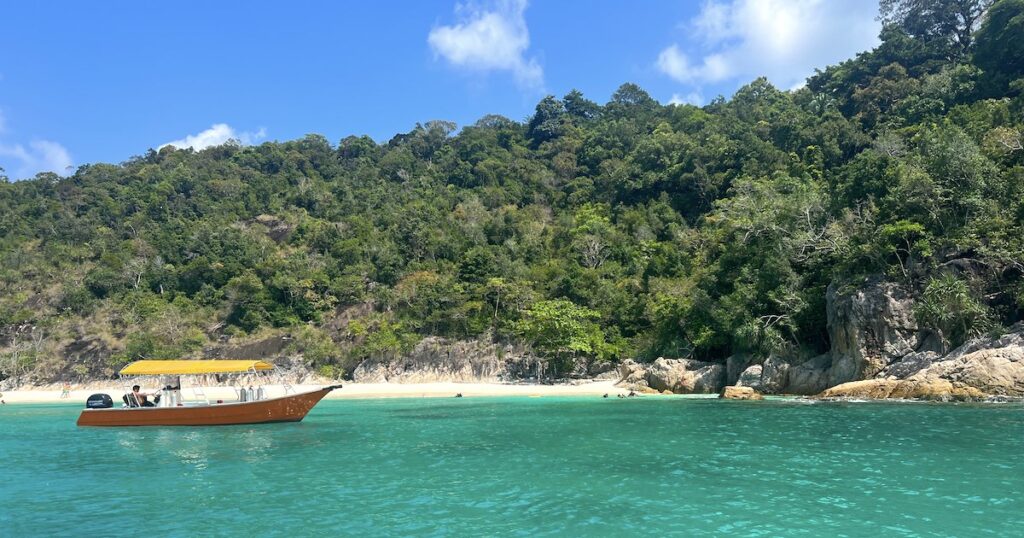
The best snorkelling is on the right-hand side of the beach (when you’re facing the ocean), near the rocks.
There were lots of small fish around the corals. Out of all of the sites I visited, I saw the most fish at Romantic Beach, and the corals were also the most colourful.
7. Visit the fisherman’s village and Masjid Ar Rahman
At the southeast end of Perhentian Kecil, there is a small fisherman’s village where many snorkelling tours stop for lunch. You can also hire a boat to go there independently.
The port is only small, but it’s surrounded by a collection of small motorised boats floating on shallow water with schools of bright silver fish.
Also known as The Village or Kampung, the fisherman’s village has a series of stilted restaurants serving delicious Malaysian dishes for a good price.
Most of the restaurants serve buffet-style food. You get a portion of rice, and you’re charged an amount based on which side dishes you choose.
There are also stalls selling desserts such as bingsu (shaved ice with fruit toppings).

In the distance, you can see Masjid Ar Rahman Pulau Perhentian (also known as Masjid Putih), the village’s floating mosque. It’s the only mosque on the island
The mosque runs free tours for those who want to see the inside.
8. Get coffee or drinks at Coral Beach
Although I found Long Beach far more scenic than Coral Beach, it does have a few nice places to grab coffee or alcoholic drinks.
In the evening, the restaurants set out plastic chairs on the sand so that you can watch the sunset. They also light up some fire caskets.
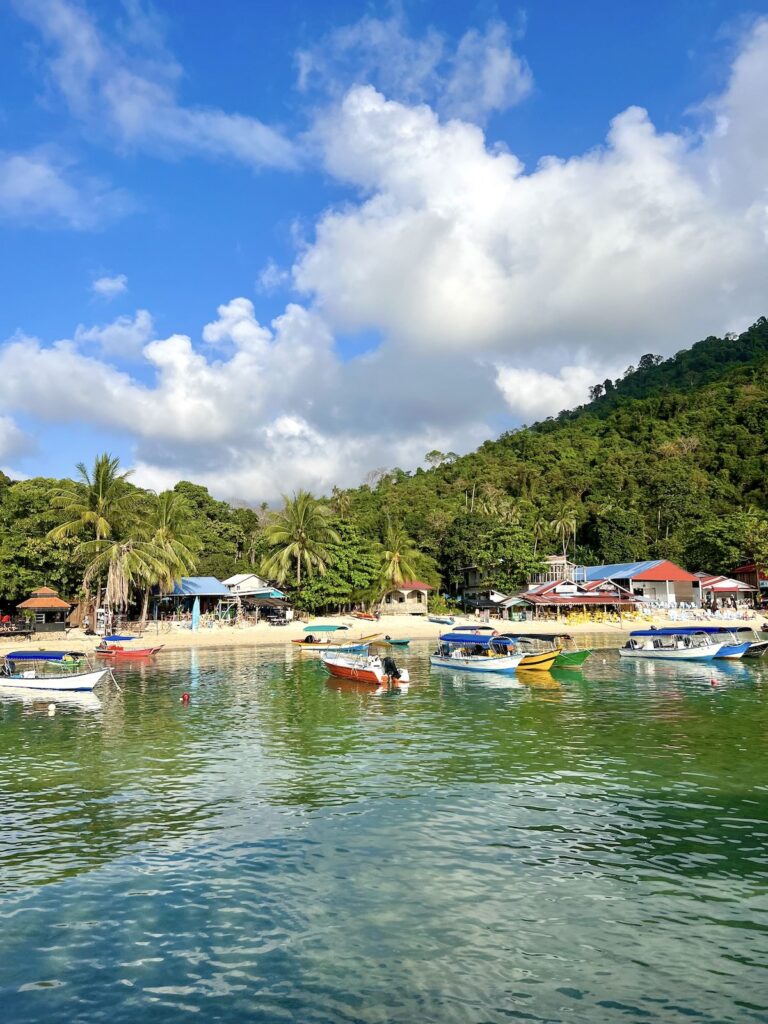
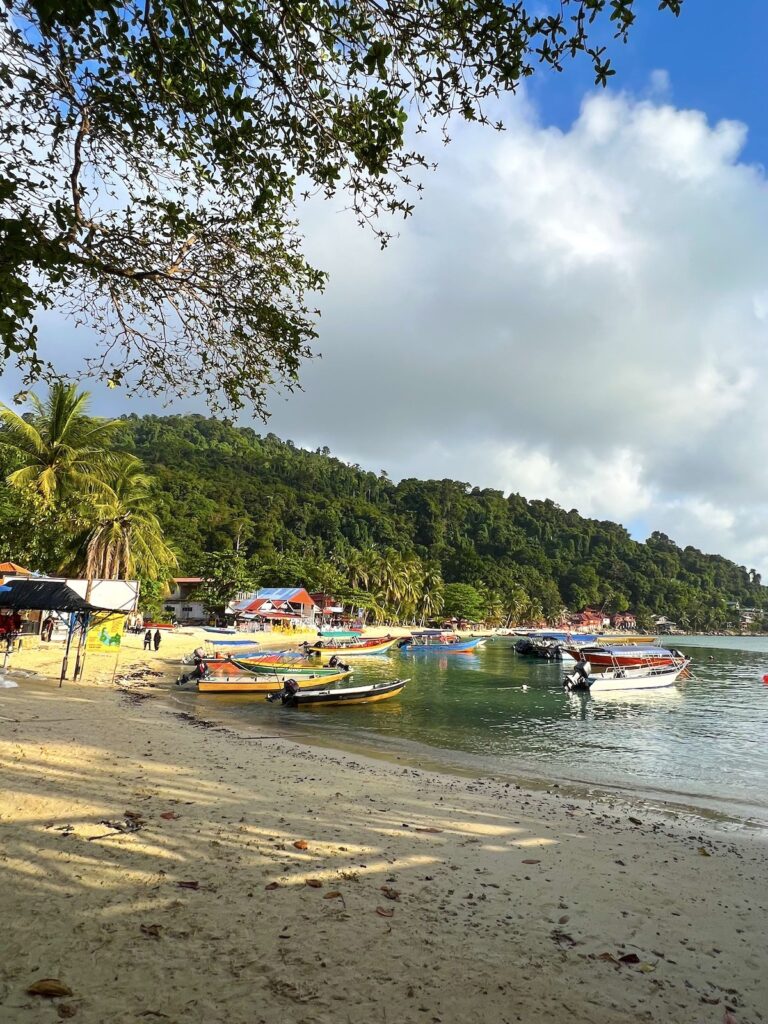

9. Eat dinner at Long Beach
Most of the time, I ate dinner at Long Beach because I found the views to be much better.
At Long Beach, I had some delicious meals at the Pit Stop Station restaurant, which serves fruit juices, milkshakes, lassis and many typical Malay meals like fried rice, tomyam and soup.

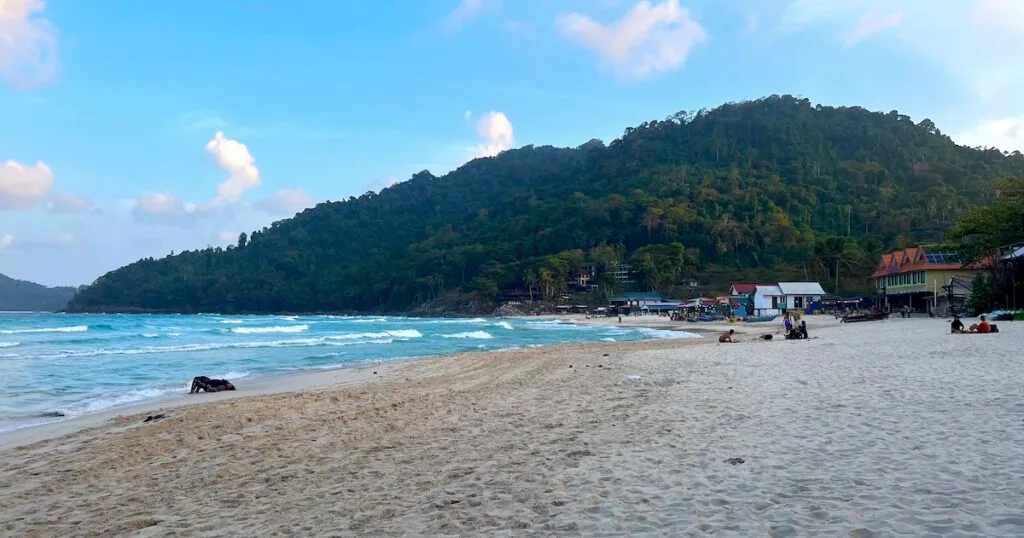
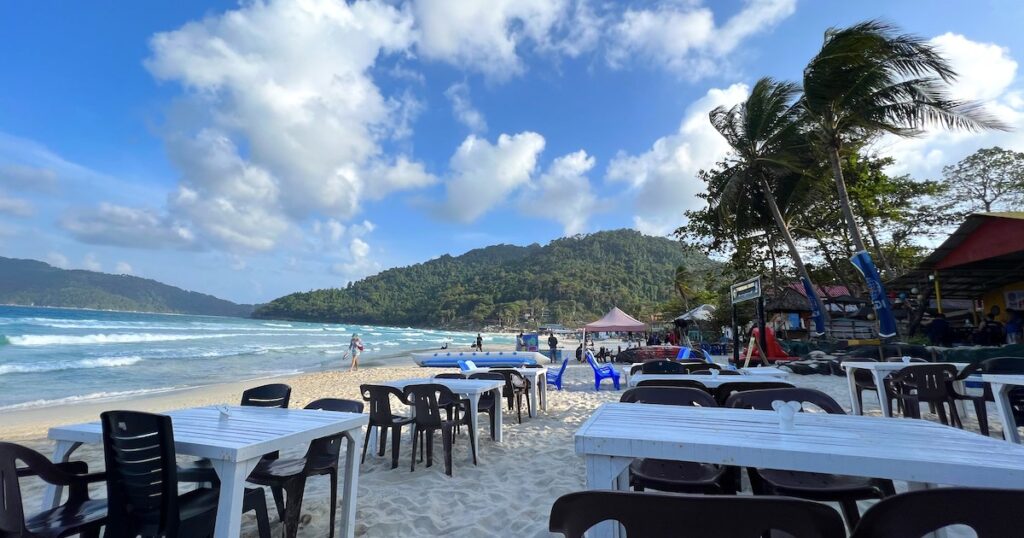
During high season, there are also multiple fire shows that take place at the northern end of the beach.
10. Visit Joe’s Bar on Long Beach
Finally, I also became a regular at Joe’s Bar during my time in the Perhentian Islands.
The small, friendly bar is at the entrance to Long Beach and hard to miss when the sun goes down, as they immediately begin blasting house and techno music.
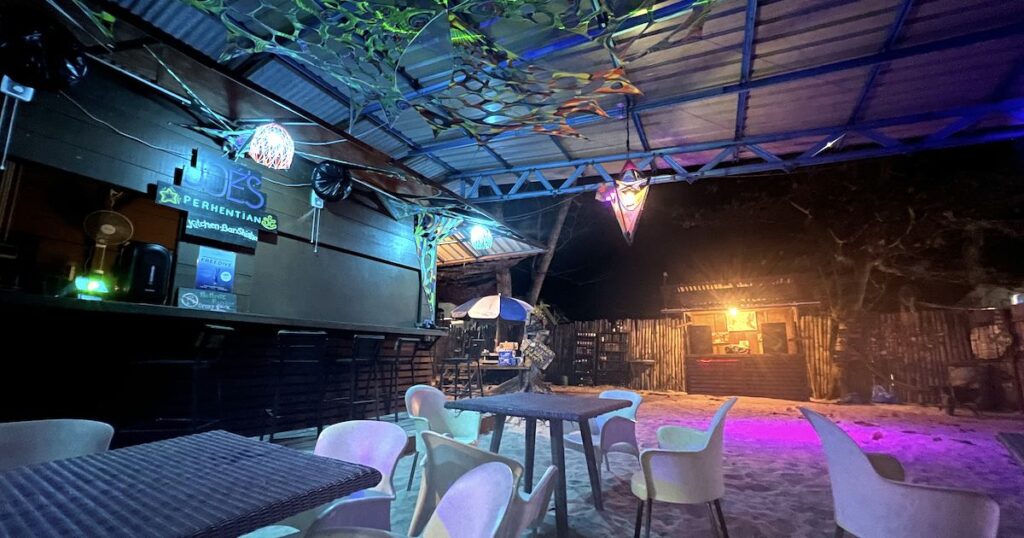
It’s a really nice vibe for backpackers.
They do cocktails with rum, gin, tequila and coffee as bases, and also sell Tiger beers.
I hope you found my guide to the Perhentian Islands in Malaysia helpful! Let me know how your trip goes, and have a great time…
Suggested reading:
- How to get to the Perhentian Islands – by ferry, bus and air!
- Taman Negara guide – here’s how you can visit Malaysia’s oldest rainforest.

